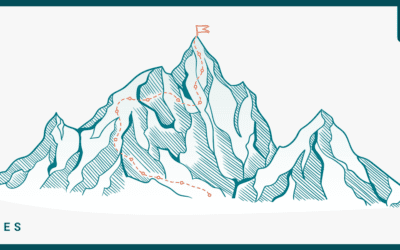You have an idea for your start-up and now you are ready to move forward. One of the first tasks will be to determine your business model.
What is a Business Model?
Remember when you were in chemistry and your teacher asked you to create a hypothesis for your experiment? You made an educated guess, followed the experiment, and wrote a conclusion. Your business model is the same. You start with an idea and create a business model which identifies the goals for producing revenue. But it no longer stops at revenue. Business models form a concept around assumptions and need to be flexible. Changes in markets, customers, and competitors will form your business in the future. It is like the Never-Ending Story of a company.
Creating a business model before you spend money with a developer enables you to make better design decisions. It will also build a better user experience.
Here are 10 Types of business models modern consumers interact with often:
- Advertising
- Bricks and Clicks
- Distributor
- Aggregator
- Razor Blade
- Franchise
- Data Monetization
- Pay-Per-Use
- Bundling
- E-commerce
All business models are not created equal and are highly dependent on your concept, customer segment, industry, and solution.
The easiest way to find the answer to which business model is right for your tech start-up is to understand your choices. For app development, there are three popular contenders for a business model and we see these often here at AppThink. Over the next couple of days, we’ll be doing deep dives on each of the three business models below, their pros and cons, and how to measure their success.
SaaS (Software as a Service) Business Model
SaaS – delivering your software over the internet via subscription. The SaaS software model has been successful for CRM, ERP, Accounting, CRM, Data Management, E-Commerce, ERP, and project management products.
Freemium Business Model
Freemium – offering your application for free with the potential for upgrades to more content. The free tier version offers interaction, so the customer gets a ‘taste’ of the product. Once a customer has the free version and is familiar with how the product works, they can upgrade. This value-added content comes with a price tag, creating more revenue. Companies that use a freemium model are gaming, audio content, and those with products requiring different service levels.
Two-Sided Marketplace Business Model
Two-Sided Marketplace – also known as the platform business model. This model involves creating a platform that brings two or more parties together providing value to each other. A two-sided marketplace has two kinds of consumers – those who are buying and those who are selling. The marketplace acts as a liaison or a central hub where the buyers and sellers can conduct business.
Who Needs a Business Model?
Every company needs a business model. New startups and established businesses can both benefit. The model serves a business by keeping founders and support staff motivated. It attracts investors and helps recruit talent. They prove that a product or service is viable and match a market need. Business models prove how a company is better than the competition.
Why do Business Models Matter?
All businesses are different. Creating a business model will help set your company apart from the competition. If you know where you are going, so will your users.
Here is a list of the benefits of using a Business Model:
- It acts as the logic of the company. It defines the basis of revenue, and how it might grow in the future.
- It will define your ability to scale and will affect your Customer Acquisition costs, your churn rate, and every KPI down the line.
- A business model is a way to stay above your competition. You can continue to improve your system over and above your competition by defining it. Differentiating your business makes it more attractive to investors, users, and channel partners.
- Defining the company in an easy-to-explain, easy-to-understand, and easy-to-act-upon way sets the message that you are serious and committed to the business.
- An interesting “side effect” of modeling is that it often challenges you as an entrepreneur or founder. This is a good thing. It will enable you to make a stronger pitch and remain focused.
- Keeping the business model at the forefront of development helps map the completion of the MVP (minimal viable product). Better direction means quicker to market.
To be disruptive, you need to innovate. A Business Model can be the foundation for game-changing tech products.
What are the Key Components of a Business Model?
The key components of a business model include planning in four main areas: infrastructure, operations, customers, and products/services.
With every model, there is a finished product or service in mind. Make sure that you are always enforcing the big picture as you consider the key components below.
Key Partners and Activities
It is vital that the team identify who is doing what. This includes responsibilities for running the company. Define who handles the business activities. Create a list of activities that need to occur from start-up to growth. Sequencing this in the business model gives you an easy-to-follow map.
Key Resources
Who is the development team? What are the startup costs and who will fund it? What vendors will you need? All your resources or potential resources should appear in the business model.
Customer Segment and Relationships
Who are the customers most likely to pay for your product or service? Keep in mind that you may have more than one type of customer. Divide them into segments such as buyers and sellers or advertisers and data producers. Understand the relationship between all customers in your model. This key component should help you to understand what types of challenges customers may experience. How do you change their lives? If you understand their needs, you can scale your business by adding products or services.
Value Proposition
What makes your products or services unique? How do you want your brand to be perceived by users? This is the value that you provide. Include intangibles that often businesses forget such as how you plan to treat both internal and external customers. The way that you manage relationships is a strong sign of your value to the marketplace.
Cost Structure / Pricing
Establish a pricing model. Be low enough to attract customers, but high enough to cover operating costs.
Revenue Stream
Know and plan how revenue is generated – is it a subscription, a purchased product, or a service? Are there integrated upsell, or cross-selling opportunities?
Distribution channels
This applies to any deliverables you might be offering – how will the customer receive them? Product downloads, Automatic Updates, New Versions?
Moving forward
Business models do not have to be a lock on your company. They are meant to set a path to success. Over time, they may need an update to reflect changes in the market or in customer preferences. You can achieve momentum without a business model. Scaling and exceeding your customers’ expectations requires a plan. Implementing a business model will help you achieve and remain a market leader.
At AppThink we have helped over 100+ founders create a business from an idea. Interested in meeting with our team to get advice on what your next steps should be?
Contact us here and our team will be in touch to schedule a time to learn more about your startup idea.



